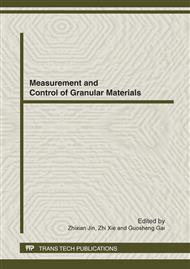p.216
p.220
p.224
p.228
p.233
p.237
p.241
p.246
p.250
Prediction on Molten Steel End Temperature during Tapping in BOF Based on LS-SVM and PSO
Abstract:
A new molten steel end temperature prediction model is built employing LS-SVM. To seek the optimal parameters of regularization parameter γ and kernel parameter σ in LS-SVM, an PSO algorithm is also proposed. To test the proposed predictor, the prediction model is applied on practical data from Fujian Sangang steelmaking collected in 100t BOF, and the validation is carried on the performance of the prediction. The model overcomes the blindness and the burden in time consuming of cross validation method, and at the same time, inherits the strong learning ability from small sample and the characteristics of simple calculation of LS-SVM. In the LSSVM optimized by PSO test cases, the Maximum Absolute Error (MAE) and the Root Mean Squares Error (RMSE) are the lowest, and the Pearson Relative Coefficient (PRC) is the highest. The results suggest that the LS-SVM optimized by PSO model can be extended to end-point judgment applications in achieving greater forecasting accuracy and quality.
Info:
Periodical:
Pages:
233-236
Citation:
Online since:
April 2012
Authors:
Price:
Сopyright:
© 2012 Trans Tech Publications Ltd. All Rights Reserved
Share:
Citation:


